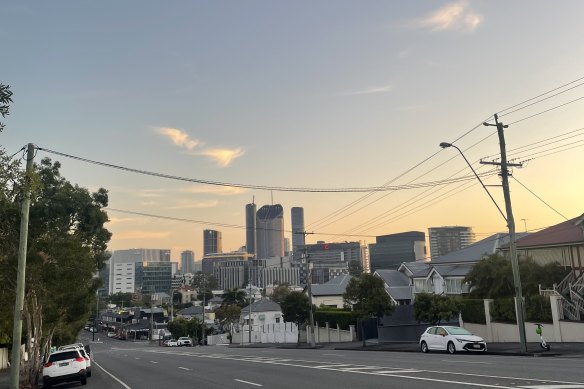Brisbane rents post surprise fall as tenants finally hit their limit
By Sarah Webb
Brisbane asking rents have fallen for the first time in years, after a concerted period of record prices that put financial pressure on tenants and cut their ability to pay any more for a home.
Weekly asking rents for houses fell just $5 or 0.8 per cent across the city to $625 in the September quarter, Domain’s latest Rent Report, released on Thursday, revealed.
Units dropped $10 or 1.7 per cent to $590 per week. Figures for houses and units were about 6 to 7 per cent higher than this time last year.
Brisbane was one of two capital cities where house rents went backwards over the quarter, despite a low vacancy rate of 0.9 per cent.
”This is a marked change in the Brisbane rental dynamics that follows the city’s longest and steepest period of growth ever seen,” Domain chief of research and economics Dr Nicola Powell said. “But the layer I’d like to add to this is how unusual it is to see a decline when there’s still a landlord’s market.
“Brisbane still has a vacancy rate of just 0.9 per cent. And while that rate has steadily risen since this time last year, it’s still very tight. I can’t emphasise how unusual that is.
“It says a hell of a lot about the financial pressure tenants are feeling and the financial impacts of escalated rents alongside strong levels of inflation and the increased cost of living. Tenants are clearly re-evaluating how they’re living or perhaps fast tracking to purchase. But either way, affordability constraints have placed the brakes on rents.”
Powell said despite the price drop, investor confidence remained strong. The portion of home loans being financed to investors was 39 per cent — higher than the decade average of 31 per cent.
“They are reacting to the growth potential of the Games and the forecast RBA rate cut. And while Queensland’s affordability has changed, it’s still more affordable than Sydney and Melbourne.”
While the report showed rents either dropped or were stable across most of the city, some pockets still recorded growth. Weekly asking rents for houses in Brisbane’s inner-city area rose 1.9 per cent (or $15) in the three months to $795.

Brisbane rents have fallen for the first time in years, but were still unaffordable. Credit: Courtney Kruk
At the suburb level, rental price growth was calculated over a 12-month period, and the report revealed houses in Albion in Brisbane’s inner north had the biggest price hike – rents rose 25 per cent to $750 per week. At the other end of the spectrum, houses in inner-city suburb Teneriffe dropped 5.3 per cent to $900.
Coronis Inner North senior property manager Michaela Hully said their agency had noticed rent growth slowed because of the increased cost of living, and not because of a lack of demand.
“We’ve only got two vacant homes available right now … and there are still pockets getting good demand, such as Albion and Lutwyche because those suburbs are still close enough to the city while being just a little bit removed,” she said.
“I think the slowed rental growth will continue and that’s because we’ve got a lot of new development happening.”
Ray White property management specialist Brittany Krebs blamed the state’s raft of new rental laws for slowing growth.
Queensland rental reforms came into effect on June 6 and banned rent bidding, limited rental increases to every 12 months and capped the maximum amount of rent that can be offered in advance.
”I think this trend will continue … and I think it will take a little bit of time for everyone to align tenancies with the new rental agreements,” she said.
“It’s interesting times in the rental market. Vacancy rates are still low and investor activity for us is mixed. Some offices are going through a stage of investors selling and owner occupiers buying, but our offices on the south side are going through massive growth phases.
“Suburbs like Daisy Hill, Marsden, Sunnybank and Logan are the big growth pockets, in my opinion.”
Krebs said sky-high rents on the Gold Coast were driving investor demand because tenants preferred to move to suburbs like Logan rather than pay higher rents in Coomera.
Harcourts Inner East principal Chris Lawsen said growth had slowed, but noted low vacancy rates benefited landlords.
“The market is still buoyant and there’s no reason for concern for investors,” he said
“But it’s not as tough as it was for tenants. I see a bit of a holding pattern from here. But January is our biggest month and that will be a telltale sign of what will happen.”
Lawson said the big surprise for their agency had been the high level of investor activity, which was defying expectations.